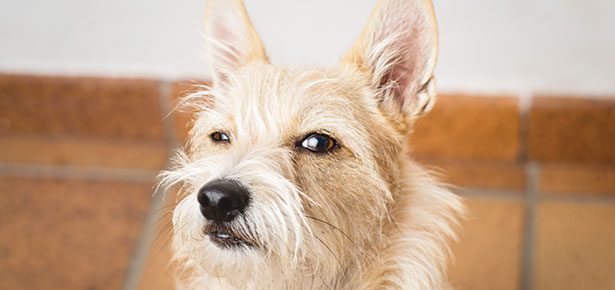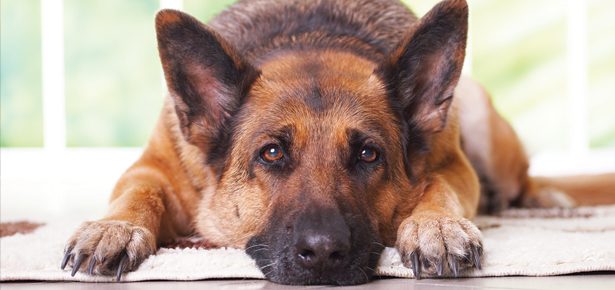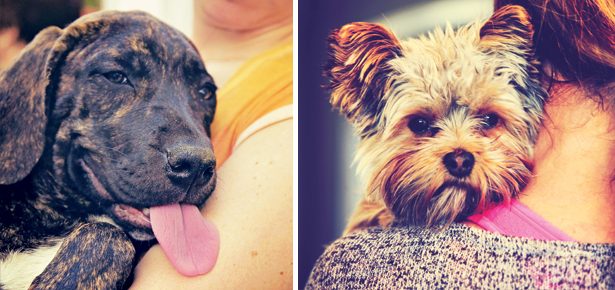

5 Ways to Help Shy, Fearful or Anxious Dogs
Never fear, help is here!
If you have a dog who is shy, anxious or fearful, you know how challenging it can be to help him feel relaxed and comfortable. You want to reassure your dog and protect him from the world, but at the same time, you know he’s got to learn to stand on his own four paws. And you definitely don’t want to inadvertently exacerbate his fears by acting in nervous anticipation of a fearful reaction. What’s a dog parent to do? Here are five ways to help.
1. Always go at your dog’s pace. Monitor carefully for signs of stress so you’ll know whether to proceed.
Dogs give stress signals such as lip licking, yawning, and turning away, among others. If you’re not sure what your dog’s signals are, have someone videotape your dog around the fear trigger. Play it back, in slow motion if possible, and watch for signals that your dog is becoming nervous. If your dog becomes too anxious when you are working on modifying his fear response, back off and reassess the program.
2. Desensitization means exposing your dog to the scary thing in a gradual, systematic way.
If your dog were afraid of the toaster, you could feed treats at a distance while another person works the toaster lever. As your dog becomes more comfortable, move closer. (My book Help for Your Fearful Dog explains these types of procedures in detail, both generally and for specific fears.) Never force your dog to confront the trigger in a way that is overwhelming. If you do, you could not only end up making things worse, but you could lose your dog’s trust.
3. If your dog’s fear has a specific trigger, you might be able to use classical conditioning, meaning pairing the scary thing with something your dog truly loves.
For example, a fear of people could mean that every time you pass a stranger, your dog gets a steady stream of hot dog bits until the person has passed. The idea is to condition an emotional response so that your dog will automatically have a good feeling when seeing a new person.
4. Strangers are a common fear trigger.
Allow your dog to make the decision to greet someone rather than the other way around. If your dog is okay with being approached, ask people not to loom over him or place a hand down over his head, which can be frightening. A hand extended palm-down with fingers curled, offered slowly at the dog’s chest level, is less scary. If the person is willing to turn slightly to the side and avert his or her eyes too, even better. Unfortunately, people are sometimes less trainable than dogs, so be a protector. You might feel impolite standing in front of your dog and saying, “I’d rather you didn’t” to fend off a direct approach from a stranger, but your dog will feel better for it.
5. If the fear is minor, habituation might be effective.
For example, an under-socialized, mildly insecure dog can benefit from being taken along to new places and being allowed to meet new people. Just be sure not to overwhelm him with too much at once.
Nicole Wilde is an award-winning author of ten books on canine behaviour. Her books, seminar DVDs, and Wilde About Dog blog can be found at nicolewilde.com.
Join the newsletter and never miss out on dog content again!
"*" indicates required fields
By clicking the arrow, you agree to our web Terms of Use and Privacy & Cookie Policy. Easy unsubscribe links are provided in every email.





